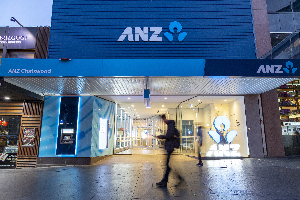
It’s the first year since the start of KiwiSaver that total fees have not risen – the combined effect of lower default fund fees, reductions in management fees by larger providers, some providers removing fixed membership fees altogether and others not earning the same level of performance fees.
Administration fees charged this year were the lowest ever, $17.3 million – a 65.7% fall from last year’s $50.3 million and down 81.2% from their peak in the year to March 2019.
John Horner, FMA director markets, investors and reporting, says it’s an important milestone as the FMA has been encouraging providers to share economic benefits of scale with members.
“Reducing fees is a meaningful way to do this because members retain more in their balances to benefit from compounding returns, but value for money is not just about fees.
"We will continue to work with supervisors to ensure managers demonstrate their value-add to members. The value-add should include investment and risk management competence which contributes to members’ balances, and advice which helps members make good decisions.”
The report says value for money means members should receive appropriate value for what they pay, and both value and price should be transparent.
“Fund managers can provide value for investors in many ways, including by spending on systems that reduce the risk of disruptions or pricing errors, by proactively offering investors meaningful on-going financial advice to improve their investment decisions, or by having investment processes that demonstrably add value.
"KiwiSaver providers have reviewed, and their respective supervisors have assessed value for money in recent months. It is part of the supervisor's role to report any concerns to us and we will respond as appropriate.”
FUM and returns
The total funds under management (FUM) was $93.7 billion – a 4.3% rise, year-on-year, and almost double 2018.
This year’s growth is largely thanks to the combined contributions of members, their employers and the Crown, worth $10.5 billion (down 6.7%). The cumulative impact of contributions significantly outweighs the cumulative impact of returns, highlighting the importance of regular contributions.
Conversely, net investment returns equated to a combined loss of $1.9 billion – a turnaround after last year’s $1.3 billion gain. The FMA puts this down to price decline in global equities and bonds through most of 2022.
Total FUM with a conservative risk profile fell by 1% to just under $18 billion, after a 7% fall in members.
Conversely, balanced funds grew the most, by 6.3% to $28 billion, after a 7% gain in members.
Growth continued to be the biggest category at $40 billion (up 3.9%) and the most members (1.45 million). This was the first full year that default members were in funds with a balanced risk profile – resulting from the Government’s changes to the default settings implemented in December 2021.
The value of default members’ savings was $2.7 billion as at 31 March 2023.
Changes between providers (including movements to different risk types were 131,260, down 16.8% on 2021, and the lowest number since 2013.
Almost two thirds of the population has a KiwiSaver account with membership growing 2.7% on last year.
Withdrawals
Member contributions ($6.5b) fell 15% on the previous year mainly due to a 63% fall in lump sum payments. The number of members classed as non-contributing rose by 0.5% while the number of members on savings suspensions is up 19.8%.
In total members withdrew $4.2 billion, up 11.7% with the largest category by value being members 65 and older who collectively withdrew more than $2.8 billion, up 46.3% year-on-year.
The report says this might have been due in part to higher term deposit rates on offer. The report said more than 170,000 over-65s remain KiwiSaver members and more are joining.
The proportion of new over-65s has risen in the past three years from 1.44% in 2020 to 2.71% in 2022 according to Inland Revenue.
Hardship withdrawals were up 36.7% compared to 2022. They hit their highest level in the wake of COVID lockdowns but it is concerning to see them rising again, the report says. Conversely first home purchase withdrawals fell 35.6% to a level last seen in 2018-19.
Changing investment profile of KiwiSaver over time
Since 2020, the proportion of people in conservative funds has reduced from 35% to 21%. Those in balanced funds have increased from 21% to 30%, with members in the new default fund representing a third of those. Selection of growth funds has increased from 33% to 37% in the last three years.
Over a 10-year period there is a complete reversal of the earlier preference for conservative, over growth funds: relative to the 2013 KiwiSaver Report when 40% of investors were in conservative funds (including default funds) and 23% were in growth. In 2023 the proportions are 21% (noting default funds are now balanced) and 37%.





Comments
No comments yet.
Sign In to add your comment